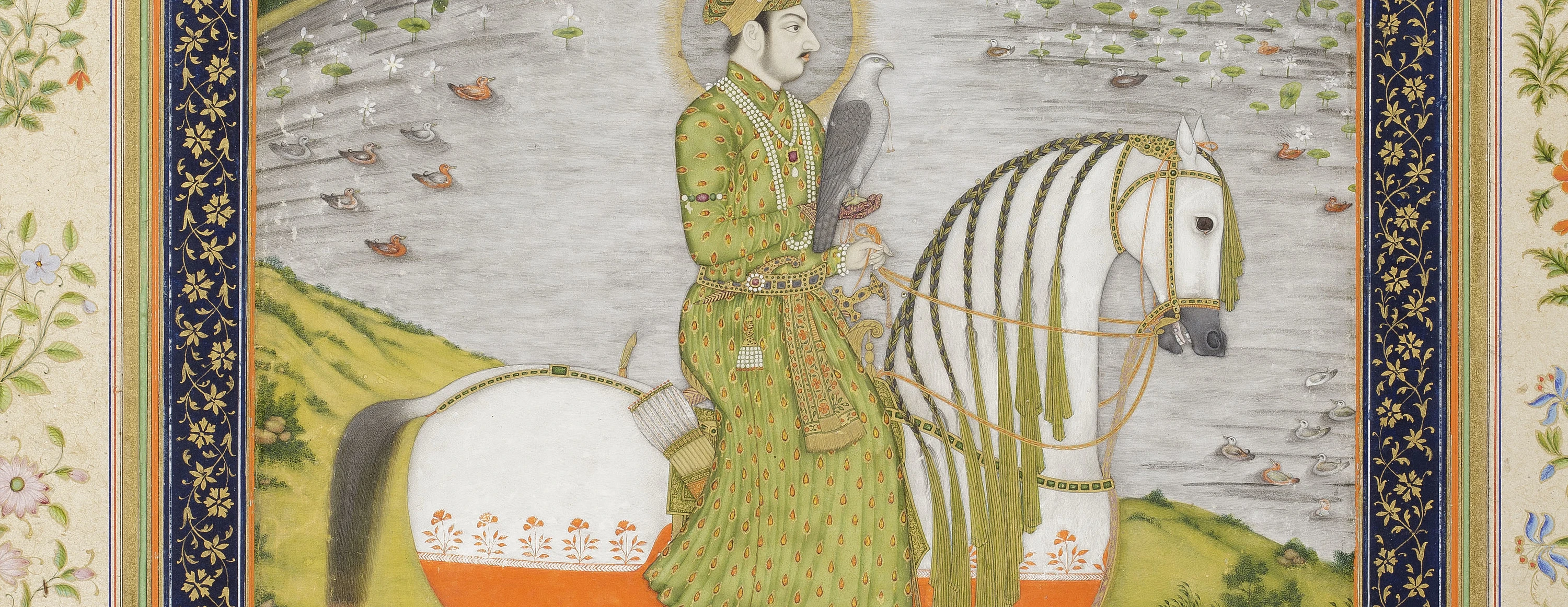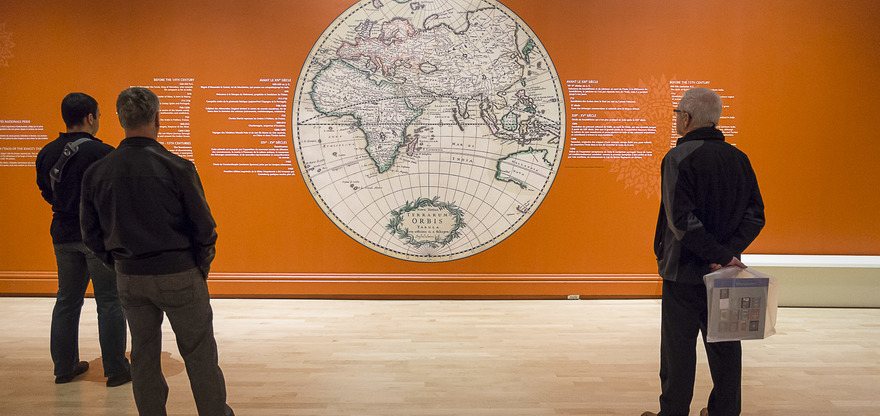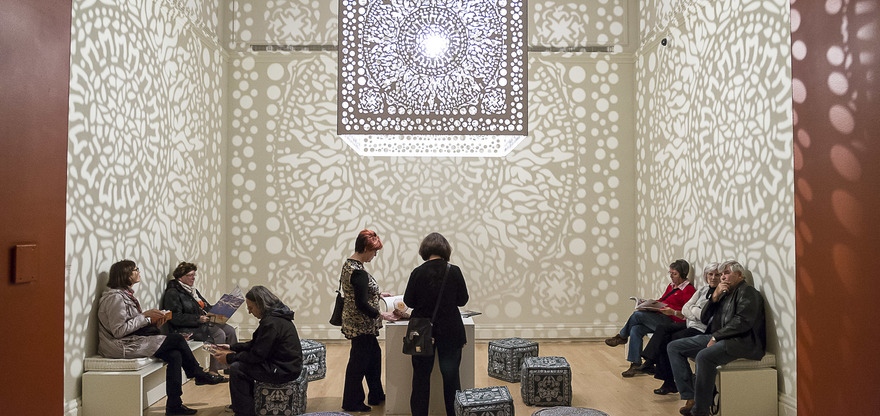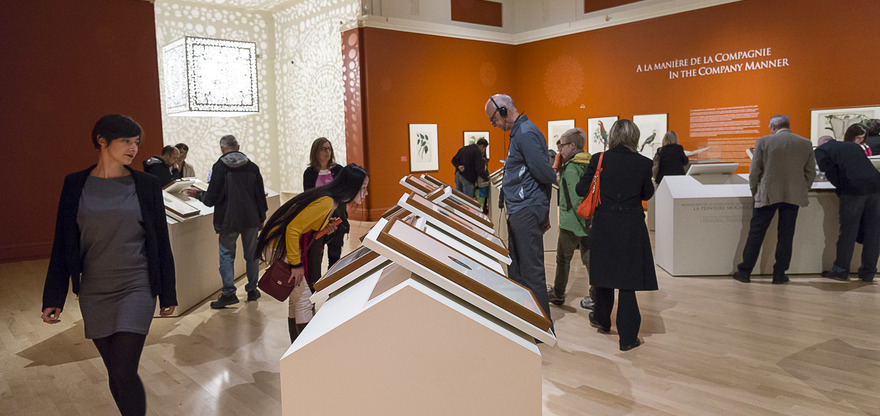Exhibition
Into India South Asian Paintings from The San Diego Museum of Art
South Asian Paintings from The San Diego Museum of Art

About
The exhibition offers a magnificent overview of 700 years of history and artistic creation, from the 12th to the 19th centuries, through a hundred works from the prestigious Edwin Binney 3rd collection of the San Diego Museum of Art.
Extremely rare sacred illuminations, Mughal paintings inspired by Persian culture and its heroes and finely-wrought illustrations of the native flora and fauna demonstrate the amazing eagerness with which Indian artists yielded to the most diverse foreign tastes without ever sacrificing the quality of their work or the indisputably Indian signature of their execution.
Indian Painting in 4 Movements
To help you discover and enjoy this finely-wrought and refined art, the exhibition is organized into 4 themes: Sacred Illuminations, Lyric Visions, Unfolding the History of Mughal Painting and In the Company Manner.
Sacred Illuminations
This first theme provides us with an opportunity to appreciate the oldest works, many of them painted on palm leaves. These paintings depict subjects having to do with the three main religions before the arrival of Islam in India: Buddhism, Jainism and Hinduism. For the most part these are devotional images from northern India, accompanied by texts in Sanskrit.
Lyric Visions
This section of the exhibition is made up of paintings illustrating two extremely important books in Persian culture. The first is the Book of Kings (Shahnama) by Firdousi, a book that traces the principal epics of the Persian Empire and in which appear the heroes Rustam and Esfandiar, and also Iskandar (Alexander the Great). The second is entitled the Quintet (Khamsa); its author, the poet Nizami, is often seen as the “re-inventor” of Persian literature.
Unfolding the Mystery of Mughal Painting
This part of the exhibition brings together paintings created during the reign of the major emperors of the important Mughal dynasty, the central Asian conquerors who established themselves in India in 1526. Following in the footsteps of his father Humayun, the second Mughal emperor, Akbar, encouraged the development of books and the arts. His son Jahangir and grandson Shah Jahan – who commissioned the Taj Mahal – continued along this path. Along with several portraits of these sovereigns shown seated on the Peacock Throne or in scenes of everyday life, this section includes paintings based on European models, including Christian paintings offered as gifts to the Mughal emperors by the Jesuits and secular Dutch engravings also presented as gifts to the princes. The narrative aspect of the images and the highly decorative quality of the borders that frame them attest to the painters’ exceptional skills. The Mughal dynasty came to an end in the mid-nineteenth century when Muhammad Bahadur Shah was deposed by the British in 1858.
In the Company Manner, from 1710 to 1890
The title of this final part of the exhibition is a reference to the importance of the British East India Company, which had been established in India in 1600. Unlike the paintings in the two previous sections, the plates on view here are not from books that have been taken apart but are instead autonomous works which illustrate the flora and fauna of the country in a highly naturalistic manner.
Edwin Binney 3rd: Portrait of a Collector
A specialist of Romance languages, a ballet dancer and the grandson of the inventor of Crayola crayons and dustless chalk, Edwin Binney 3rd did not appear destined to establish one of the finest collections of South Asian paintings in the world.
This remarkable distinction is due in the end to his passionate curiosity. Born in 1925, Edwin Binney 3rd studied the classics and obtained a Bachelor of Arts degree with a specialization in French from Harvard University. He followed that up with a doctorate in Romance languages, writing his dissertation on Théophile Gautier and ballet. During this period he also studied ballet with Alicia Langford, whom he married, and began to collect works of art.
In 1958, he decided to focus on Indian and Islamic art, which were still affordable at the time. These were to become his principal interests for more than twenty-five years. Edwin Binney 3rd carried out in-depth study of Indian painting at a time when the topic interested few historians of Western art.
The author of numerous catalogues and the curator of several exhibitions in the United States, he was an active and highly respected member of the board of directors of the San Diego Museum of Art to which, upon his death in 1986, he bequeathed his collection of Indian paintings and manuscripts, considered one of the most amazing in the field anywhere in the world.







Give us your feedback